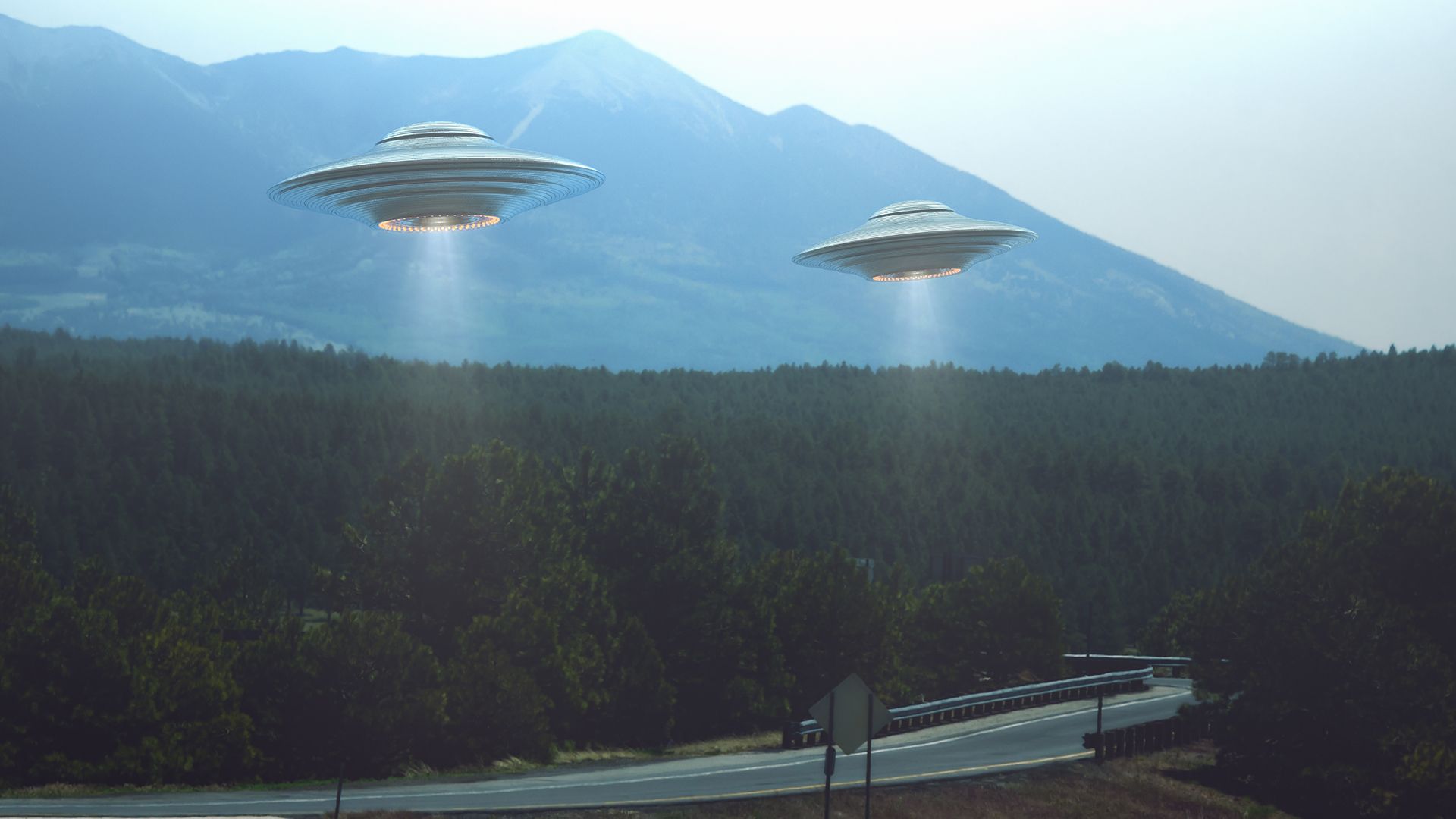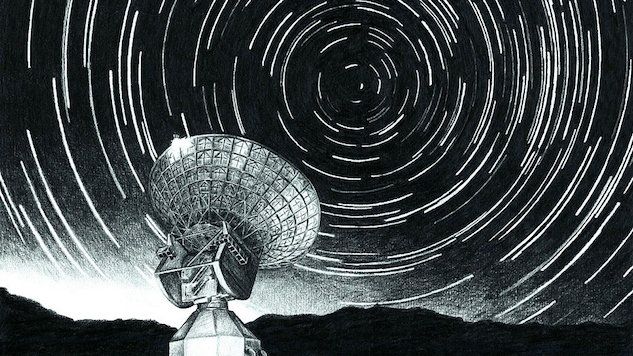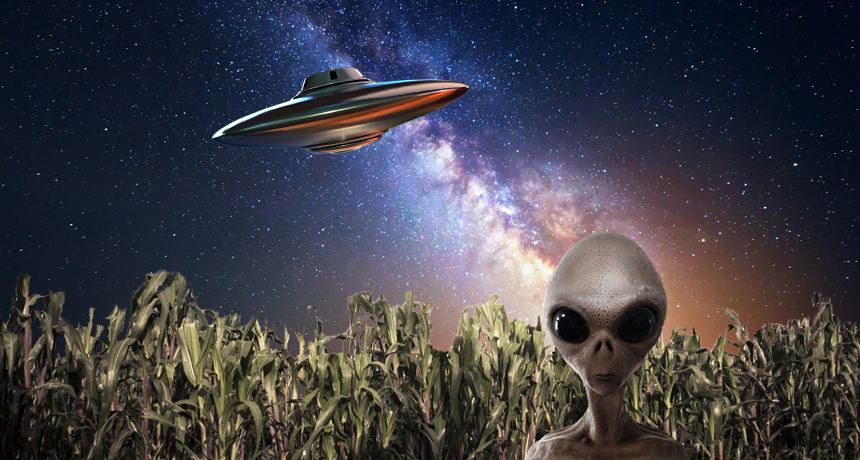Here Are Some Scientists Arguing That UFOs Exist
Article by Jason St. Jacques September 2, 2020 (filmdaily.co)
• With social media and recent announcements by the U.S. Navy, more than ever believers are pushing to prove UFOs exist. The scientific community is beginning to change their dialogue on UFOs. Here are all (some) of the outspoken scientists arguing for the existence of UFOs.
• Michael Masters – A biological anthropology professor at the University of Montana, Masters believes that the aliens that we see buzzing around in their UFO craft are actually humans from the future. Master’s discusses his theory in his book, Identified Flying Objects: A Multidisciplinary Scientific Approach to the UFO Phenomenon (2019). “We know that we’ve had a long evolutionary history on this planet,” says Masters. “And we know our technology is going to be more advanced in the future. I think the simplest explanation, innately, is that it is us.”
• Helen Sharman – A scientist and Britain’s first astronaut, Sharman spent eight days on the Soviet Mir space station in 1991. When she returned, she stated unequivocally, “aliens exist, there’s no two ways about it.” She even believes many of us have had encounters with aliens during our lives and didn’t know. In January 2020, Sharman told The Observer, “There are so many billions of stars out there in the universe that there must be all sorts of different forms of life.” “It’s possible they’re here right now and we simply can’t see them.”
• Kevin Knuth – A NASA researcher and assistant professor of physics at the University of Albany in NY, Knuth says that “there’s plenty of evidence to support UFO sightings,” although researching UFOs is “extremely challenging”. Knuth points to the recent UFO sightings by the US military, “[S]ome of the strange flying objects that outperform the best aircraft in our (military) inventory and defy explanation may indeed be visitors from afar.” He also notes the wide array of multiple witnesses, photographic evidence, and patterns of UFO activity. In Knuth’s opinion, the biggest issue with the topic of UFOs is the taboo nature it has in the scientific community.
• Alexander Wendt – An author & political scientist, Wendt admits to being frustrated with the scientific community for their underwhelming reaction to new evidence on UFOs & alien life. He is intrigued by the unknown something blocking scientists from taking UFO studies seriously. Says Wendt, “[A]nything else even remotely this interesting would generate limitless research dollars.” He told Vox, “[I]f ETs were discovered, it would be the most important event in human history.”
• Andrew Fraknoi – A former professor of astronomy at Foothill College in California and a member of the board for the SETI in Mountain View, California, Fraknoi believes that aliens may be among us, but arrived in the form of microorganisms – casting aside the theory of green people. From our lands to our oceans, it’s hard to keep track of everything falling to Earth.
• [Editor’s Note] Hey Jason St. Jacques, how did you miss Dr. Eric Davis, prominent Earthtech astrophysicist who has worked on black budget Pentagon UFO programs since 2007, and who told Pentagon officials last March about retrievals of “off-world vehicles not made on this Earth,” according to a July 23rd New York Times article? (see ExoArticle here)

With the help of social media and even recent announcements by the U.S. Navy, more than ever believers

are pushing to prove UFOs exist. If fuzzy pictures or government conspiracies aren’t enough to convince you, maybe these scientists can.
From documenting key evidence to tightening their arguments, the scientific community is changing the dialogue on UFOs. Here are all the outspoken scientists arguing for the existence of UFOs.
UFOs exist: So do Earthlings from the future
Refusing to denounce the recent stockpile of images & testimonials of UFO sightings is the stance of Michael Masters – a biological anthropology professor at the University of Montana.

In the argument for the existence of UFOs, Masters doesn’t think these objects are the vehicle of choice for little green people. Instead, Masters proposed UFOs are driven by humans from

the future. Master’s discussed the theory in his book, Identified Flying Objects: A Multidisciplinary Scientific Approach to the UFO Phenomenon (2019).
Putting stake in the greater proof of UFOs than of aliens, Masters discussed his theory with Leonard Davis from Space.com. Davis theorized, “We know that we’ve had a long evolutionary history on this planet. And we know our technology is going to be more advanced in the future. I think the simplest explanation, innately, is that it is us.”
An astronaut knows aliens are real
Scientist & astronaut Helen Sharman was Britain’s first astronaut. Sharman took a trip to the Soviet Mir space station in 1991, and returned with a conclusive thought: “aliens exist, there’s no two ways about it.”

Sharman spent eight days working in space as a chemist and researcher. She even believes many of us may have had encounters with aliens during our lives and didn’t know. If perspective from the ground isn’t enough to convince you, what about from someone who’s seen our very

civilization from above?
In January 2020 Sharman told The Observer, “There are so many billions of stars out there in the universe that there must be all sorts of different forms of life” – although Sharman doesn’t know if they’re carbon-based like humans. She even suggested, “It’s possible they’re here right now and we simply can’t see them.”
UFOs exist: They’re worth a “serious study”
Those are the beliefs of Kevin Knuth – a NASA researcher and assistant professor of physics at the University of Albany in NY. Knuth remembered always being interested in UFOs, and professed, “there’s plenty of evidence to support UFO sightings.”
With a firm understanding of the scientific method, Knuth admitted studying or testing for UFOs is “extremely challenging” – the appearance of UFOs can’t just be repeated. Knuth discussed the “discrepancy between the expectation that there should be evidence of . . . and the presumption that no visitations have been observed.”
FAIR USE NOTICE: This page contains copyrighted material the use of which has not been specifically authorized by the copyright owner. ExoNews.org distributes this material for the purpose of news reporting, educational research, comment and criticism, constituting Fair Use under 17 U.S.C § 107. Please contact the Editor at ExoNews with any copyright issue.







